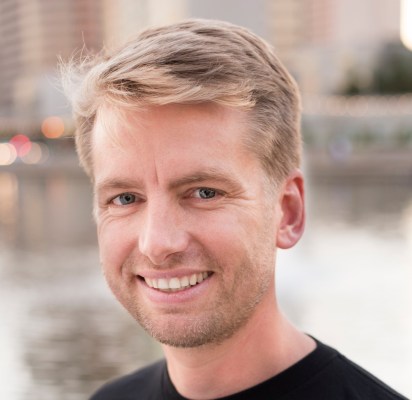Crowdsourced design marketplace 99designs launched 10 years ago this week, so I talked to CEO Patrick Llewellyn (who joined in 2009) about the anniversary, and where the company goes from here.
Turns out Llewellyn and the official 99designs headquarters both relocated back to Melbourne recently, a move that’s intended to lay the groundwork for 99designs to go public on the Australian Securities Exchange.
Llewellyn explained that the ASX has reporting requirements that are “less onerous” than listing in America, and it offers the ability to go public while still being relatively small scale. (The company says it’s currently generating around $60 million in annual revenue.)
99designs has had an unusual funding history, waiting three years before raising $35 million from Accel, then only raising another $10 million in the seven years since. Llewellyn told me that a couple of years ago, his team decided to focus on becoming “masters of our own destiny,” which meant building a sustainable business that wouldn’t require additional venture funding. And indeed, the company was profitable for the first time last year.
The next big step is going public. Llewellyn said the move back to Melbourne doesn’t indicate any kind of retreat from 99designs’ global ambitions — it’s paid designers in 184 countries, and has employees around the world. Plus, other companies started out with a listing on the ASX in the past before going on to dual listings in Hong Kong, London or New York.
“It’s a springboard,” Llewellyn said. “In fact, it’s a stepping stone.”
As for when the IPO might actually take place, he said, “The reality is, I’m not sure what global markets are going to do, so all I can really focus on is getting the business ready, continuing to foster relationships with what is essentially a new set of investors.” He added that the company’s major shareholder, Accel, is “exceptionally supportive of us and our ambitions.”
On the product side, Llewellyn acknowledged that the landscape has gotten more competitive, with “a multitude of marketplace opportunities” around crowdsourced and freelance design. So the company has had to evolve on this front, as well.
While 99designs is best-known for its design contests (where a business describes what they’re looking for and freelance designers submit their ideas), it’s also added the ability for businesses to simply find a designer to work with directly. Lewellyn said this is “the beginning” of a broader set of features that use “all of the data accumulated from nearly a million customer interactions” to create more ways for businesses and designers to work together.
More broadly, he argued that the 99designs approach isn’t something that designers with more traditional roles should be afraid of.
“I see us as an augmentation tool,” he said. “Busy designers in high-paying Western jobs are able to take certain tasks they don’t have time to address and put them to a broader community of designers … I don’t see a world in which the human interaction that occurs between designers inside an organization will ever be wholly replaced by the communication that happens online.”
